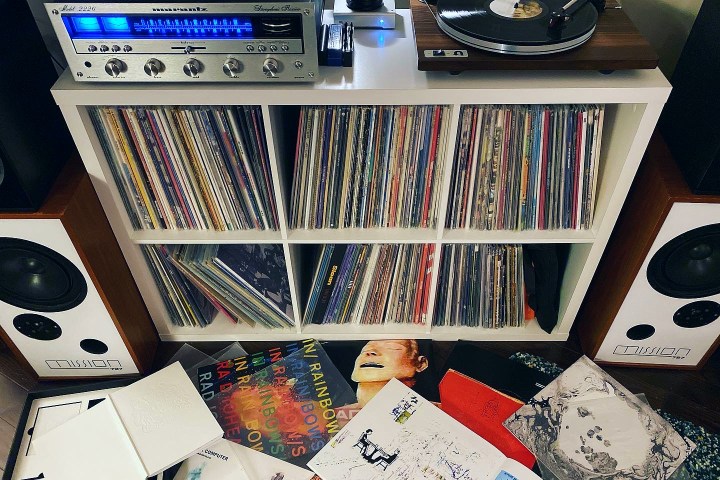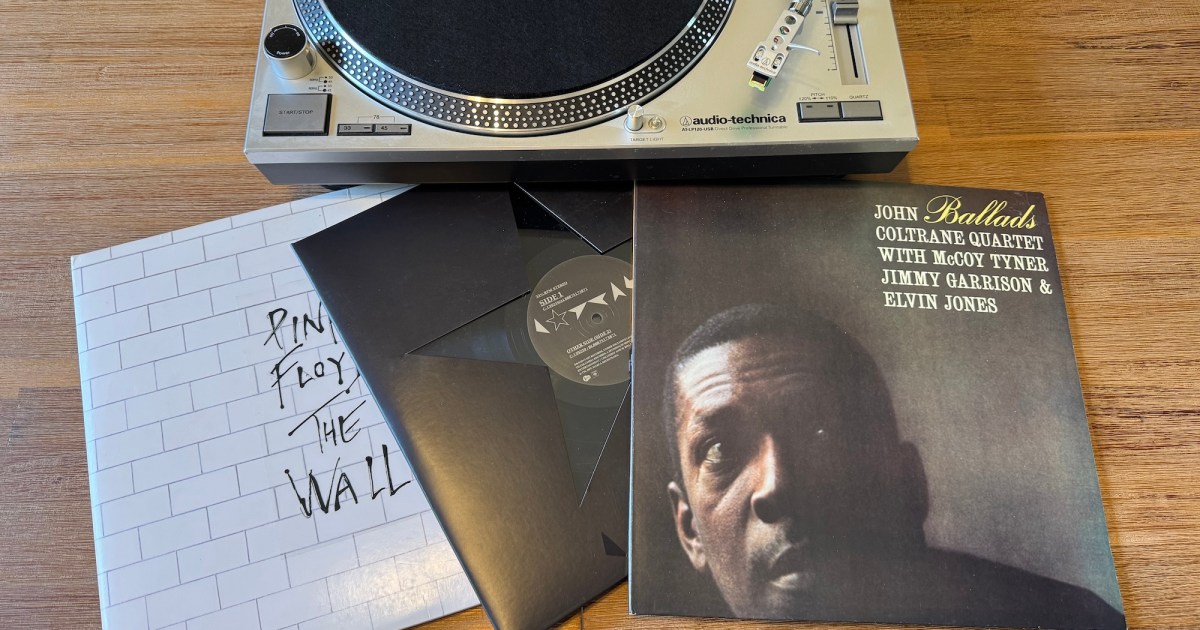Long before the recent vinyl renaissance, audiophiles have long espoused the analog benefits of vinyl records as being vastly superior to digital. The argument often includes claims of vinyl sounding “warmer,” or that digital audio is built on discrete steps with a staircase-shaped waveform that leaves out the audio information that a smooth, continuous analog signal retains (this is, by the way, a fallacy that’s been perpetuated for decades).
Because analog sound reproduction — and the analog production chain — is a continuous signal, audiophiles contend that it’s a more accurate representation of the original recording or performance. Except in 2025 (and for the past 40 years), apart from perhaps a few rare instances, there’s no such thing as a purely analog production chain. At some point, even if you’re listening to a vinyl record, that audio signal was digital.
Unsurprisingly, there are many steps that go into the production of a recording. There’s obviously the actual singing and playing of the instruments, the addition of any processing and effects during (or after) recording, the media those master tracks are put or saved on, mixing, mastering, and the pressing of the vinyl (and other smaller steps along the way). After the wider introduction of digital audio technology back in the 70s and 80s, it began to work its way in to the production process — either for experimentation to determine what it could do, or to open creative opportunities, or to make the process easier, faster, and cheaper to accomplish.
The dynamic range capability of digital recording over analog also made it a better way to capture orchestral sounds, which require a much wider dynamic range (the difference between the quietest and loudest sound) than pop, rock, or jazz recordings to properly capture a performance.

Once we got to the 1990s and the proliferation of digital audio workstations (DAWs) like Pro Tools, Cakewalk, Digital Performer, and Cubase, digital had become near impossible to avoid. Analog methods, while still taught to new students for the historical perspective, weren’t as much a part of the workflow anymore. (As an audio production student in the mid to late 90s, mine was one of the last class years to cut and splice magnetic tape.)
The non-destructive ability to try different edits quickly proved too appealing to ignore. If Being for the Benefit of Mr. Kite was produced in 1997 instead of 1967 would we have the same psychedelic carnival sojourn comprised of randomly spliced together pieces of an organ recording? Perhaps not. But I digress.
The ability to create a fully analog recording in 2025 is exceedingly difficult and expensive. Analog recording decks require specialized maintenance, and the tape used for master recordings is vastly more expensive than recording to a hard drive (not to mention the degradation of magnetic tape that’s inevitable over time). Unless expressly put together to avoid all digital technology, a modern recording studio will include a DAW, a console that includes digital elements, digital instruments, digital effects modules, and digital controllers.
Mixing is done in the digital realm. Mastering is done in the digital realm. Even reissues and remasters of classic recordings that were originally fully analog are mixed and mastered from masters that were transferred to digital, likely years ago. It’s unavoidable. And really, with digital technology where it is, there’s no reason to even try to avoid it. Except for those who tout the superiority of analog over digital.
Does digital in vinyl matter?
When it comes down to it, any digital addition to the production chain should be audibly transparent — and if it isn’t, there’s something wrong with the equipment, not the medium. Just a few years ago, there was a controversy with MoFi (Mobile Fidelity Sound Lab) where it came out that DSD (Direct Stream Digital) files were used for its All Analog vinyl records, resulting in a $25 million settlement. But was anyone able to audibly identify that in the more than a decade before it came to light?
I’m not here to yuck anyone’s yum, especially since I enjoy the ritual of listening to my favorite vinyl recordings as well. But that’s just it. I appreciate the ritual. Holding the record sleeve, admiring the art and design, sliding the LP out, carefully flipping it in my hands to select the side I want before placing it on my turntable and dropping the needle, it all satiates a need for appreciation.
Appreciation of the recording artists. Appreciation of the engineers, mixers, and technicians involved. Appreciation of the effort it takes to create the recording — of which I’m intimately aware.
But more importantly, an appreciation of the art.

The vast majority of times I put on a record — and this goes back to my teenage years — it’s to experience the art of the album. The craftsmanship of The Wall, the emotional gut-punch of Blackstar, the beauty of Brahms second piano concerto, or the sonic fabric weaved by the John Coltrane Quartet. If I sit down to listen to a record, I’m usually there for the whole thing.
But am I (or are you) missing some extra magic because the Led Zeppelin III remaster had analog-to-digital conversion at some point in the chain? I don’t think so. The magic of the music is there no matter the medium. And the ritual of vinyl so many of us enjoy isn’t affected by 1s and 0s.

